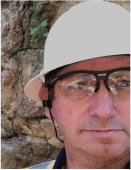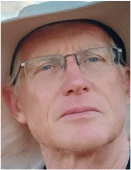A framework for inclusion of faults in coal seam gas risk assessments
Titus A. Murray A C and William L. Power BA Southern Highlands Structural Geology, Bowral, Australia.
B Power Geoscience Pty Ltd, South Fremantle, Australia.
C Corresponding author. Email: titus@shsgeo.com
The APPEA Journal 61(2) 695-698 https://doi.org/10.1071/AJ20066
Accepted: 24 March 2021 Published: 2 July 2021
Abstract
Assessments for coal seam gas (CSG) projects may be required to consider the potential hydrological impacts of faults on surface and near-surface groundwater assets. This study presents three distinct end-member geological scenarios and outlines methods for characterising fault-related groundwater flow within a risk assessment context.
Scenario 1: a regional aquitard isolates the water assets from the coal seams. There is little risk of leakage across the aquitard because there are no faults, or because the faults have maximum displacements less than the thickness of the aquitard.
Scenario 2: a region-wide aquitard is not present, and the seams and the groundwater assets are located within the same groundwater system. In this scenario, CSG development may cause pressure changes to propagate parallel to the strike and dip of the fault in the fault damage zones.
Scenario 3: regional aquitard(s) are present, but larger displacement faults breach the aquitards, allowing for possible combinations of across-fault connections between the different aquifers, and between aquifers and the coal seams. In this scenario, potential flow pathways between the groundwater and the CSG field need to be characterised using Allan Maps (fault plane profiles).
It is essential to compare calculated flow rates of any new or potentially new flow pathways with the predevelopment flow regime. It is also important to recognise that flow estimates are best made using a Darcy’s law treatment for flow across fault zones and within the aquifers, and a Snow’s law treatment (discrete fracture network) for flow through fractures in fault damage zones.
Keywords: fault, coal seam gas, risk assessment, groundwater, aquifer, aquitard, Allan Maps, discrete fracture network, DFN, hydraulic conductivity, permeability, causal pathway.

Titus Murray is an NSW-based structural geologist, consultant and independent researcher with over 30 years of structural geology experience. Titus has worked at Ockham Technologies, Petrosys, Maptek, UK Nirex, Midland Valley and Southern Highlands Structural Geology/FaultSeal for 20 years. Titus has specific experience in the fields of oil and gas and groundwater. He has spent much of the last 20 years developing stochastic algorithms to analyse fault seal and conducting independent research on the character and geometry of fault zones. He also has significant experience with structural restorations, 3D modelling and the estimation and constraint of reserves and fill capacity for conventional oil and gas reservoirs. Titus is a fellow of The Geological Society of London, and a member of PESA, AAPG, SPE and EAGE. |

William (Bill) Power is a Western Australia-based structural geologist/consultant and independent researcher with over 30 years of experience in work with geological faults, fault zones and fractured rock masses. He is originally from the United States but has been in Australia for the last 30 years. He has worked as a researcher and consultant in many areas related to geological faults in both oil and gas and minerals. He has worked at CSIRO, small consulting companies including Fractal Graphics Pty Ltd, Task Geoscience Asia and also at Baker Hughes. His interests span earthquake hazards, structural geology, mineral exploration and production, hydrogeology and oil and gas-related fault seal, wellbore stability and in situ stress estimation. He is a member of the American Geophysical Union (AGU), the Australian Institute of Geoscientists (AIG) and the Geological Society of America (GSA). |
References
Allan, U. S. (1989). Model for hydrocarbon migration and entrapment within faulted structures. AAPG Bulletin 73, 803–811.| Model for hydrocarbon migration and entrapment within faulted structures.Crossref | GoogleScholarGoogle Scholar |
Bond, C. E., Shipton, Z., Gibbs, A. D., and Jones, S. (2008). Structural models: optimising risk analysis by understanding conceptual uncertainty. First Break 26, 65–71.
| Structural models: optimising risk analysis by understanding conceptual uncertainty.Crossref | GoogleScholarGoogle Scholar |
DPIE (2020). Narrabri Gas Project, State Significant Development SSD 6367, Assessment Report, New South Wales, Department of Planning, Industry, and Environment. Available at https://majorprojects.planningportal.nsw.gov.au/prweb/PRRestService/mp/01/getContent?AttachRef=SSD-6456%2120200611T101108.126%20GMT
Fossen, H. (2016). ‘Structural Geology’. Second Edition. (Cambridge University Press: Cambridge, United Kingdom).
Iverach, C. P., Cendón, D. I., Beckmann, S., Hankin, S. I., Manefield, M., and Kelly, B. F. J. (2020). Constraining source attribution of methane in an alluvial aquifer with multiple recharge pathways. Science of The Total Environment 703, 134927.
| Constraining source attribution of methane in an alluvial aquifer with multiple recharge pathways.Crossref | GoogleScholarGoogle Scholar |
KCB-ERM (2017). Western Surat Gas Project, Public Environment Report. Report 170206_WSGP IESC. Klohn, Crippen, Berger (KCB) and Environmental Resource Management (ERM). Available at https://www.senexenergy.com.au/wp-content/uploads/2018/02/Attachment-L.pdf.
Murray, T. A., Power, W. L., Johnson, A. J., Christie, G. J., and Richards, D. R. (2019). Validation and analysis procedures for juxtaposition and membrane fault seals in oil and gas exploration. Geological Society, London, Special Publications 496, 145–161.
| Validation and analysis procedures for juxtaposition and membrane fault seals in oil and gas exploration.Crossref | GoogleScholarGoogle Scholar |
Power, W. L., and Murray, T. A. (2020). Discussion on ‘A knowledge database of hanging-wall traps that are dependent on fault-rock seal’, Geological Society, London, Special Publications, 496, 209–222, 10.1144/SP496-2018-157. Petroleum Geoscience 27, .
| Discussion on ‘A knowledge database of hanging-wall traps that are dependent on fault-rock seal’, Geological Society, London, Special Publications, 496, 209–222, 10.1144/SP496-2018-157.Crossref | GoogleScholarGoogle Scholar |
Pratt, W. (1998). Gunnedah Coalfield (north) Regional Geology 1:100 000, 1st Edition. (Geological Survey of New South Wales, Sydney.)


